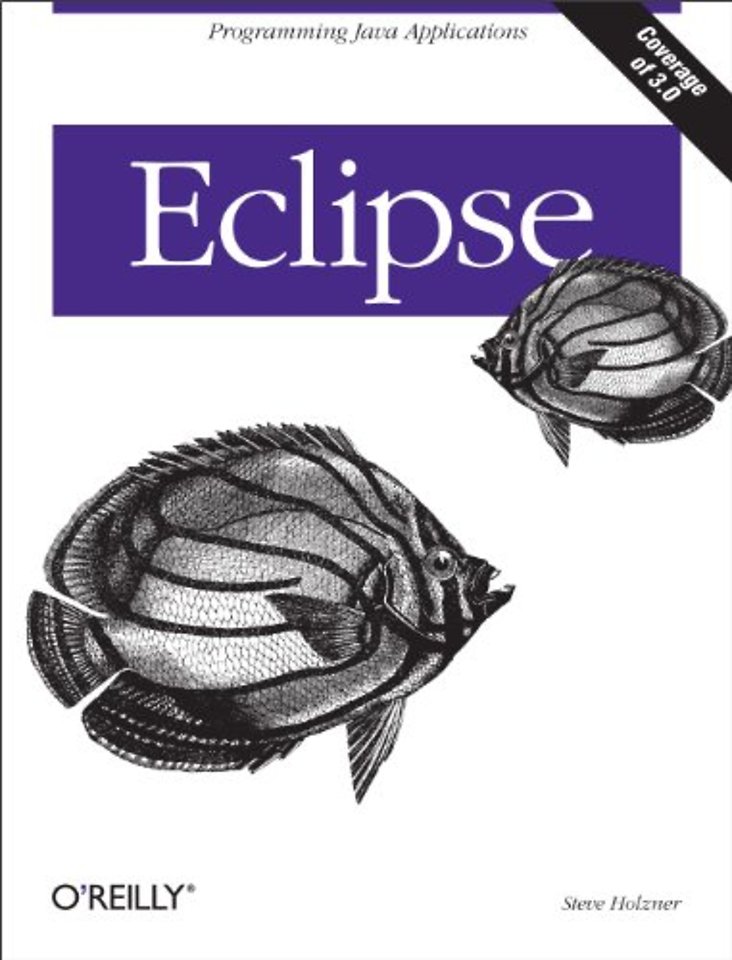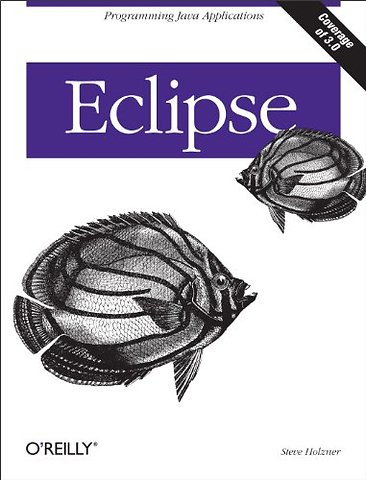Eclipse
Paperback Engels 2004 9780596006419Samenvatting
Java programmers know how finicky Java can be to work with. An omitted semi-colon or the slightest typo will cause the Java command-line compiler to spew pages of annoying error messages across your screen. And it doesn't fix them--that's up to you: fix them, compile again, and hope that nothing goes wrong this time.Eclipse, the popular Java integrated development environment (IDE) provides an elegant and powerful remedy for this common, frustrating scenario. It doesn't just catch your errors before you compile, it also suggests solutions. All you need to do is point and click. And it's free--what could be better Still, if you're like most programmers, mastering a new technology--no matter how productive it will make you in the long run--is going to take a chunk out of your productivity now. You want to get up to speed quickly without sacrificing efficiency.O'Reilly's new guide to the technology, Eclipse, provides exactly what you're looking for: a fast-track approach to mastery of Eclipse. This insightful, hands-on book delivers clear and concise coverage, with no fluff, that gets down to business immediately. The book is tightly focused, covering all aspects of Eclipse: the menus, preferences, views, perspectives, editors, team and debugging techniques, and how they're used every day by thousands of developers. Development of practical skills is emphasized with dozens of examples presented throughout the book.From cover-to-cover, the book is pure Eclipse, covering hundreds of techniques beginning with the most basic Java development through creating your own plug-in editors for the Eclipse environment. Some of the topics you'll learn about include:Using Eclipse to develop Java codeTesting and debuggingWorking in teams using CVSBuilding Eclipse projects using AntThe Standard Widget Toolkit (SWT)Web developmentDeveloping Struts applications with EclipseFrom basics to advanced topics, Eclipse takes you through the fundamentals of Eclipse and more. You may be an Eclipse novice when you pick up the book, but you'll be a pro by the time you've finished.
Specificaties
Lezersrecensies
Inhoudsopgave
What's Inside;
Conventions Used in This Book;
What You'll Need;
Using Code Examples;
We'd Like to Hear from You;
Chapter 1: Essential Eclipse;
1.1 Eclipse and Java;
1.2 Getting Eclipse;
1.3 Understanding Eclipse;
1.4 Views and Perspectives;
1.5 Working with Eclipse;
1.6 Using Quick Fix;
1.7 A Word About Project Management;
Chapter 2: Java Development;
2.1 Developing Java Code;
2.2 Building and Running Code;
2.3 Creating Javadoc;
2.4 Refactoring;
2.5 Some Essential Skills;
2.6 Customizing the Development Environment;
Chapter 3: Testing and Debugging;
3.1 Testing with JUnit;
3.2 Debugging;
Chapter 4: Working in Teams;
4.1 How Source Control Works;
4.2 Understanding CVS;
4.3 Finding a CVS Server;
4.4 Adding a Project to the CVS Repository;
Chapter 5: Building Eclipse Projects Using Ant;
5.1 Working with Ant;
5.2 JARing Your Output;
5.3 Configuring Ant in Eclipse;
5.4 Catching Errors in Build Files;
Chapter 6: GUI Programming: From Appletsto Swing;
6.1 Creating AWT Applications;
6.2 Creating Swing Applications;
6.3 Using Eclipse Plug-ins;
6.4 Using the V4ALL Plug-in;
Chapter 7: SWT: Buttons, Text, Labels, Lists, Layouts, and Events;
7.1 Java Graphics;
7.2 An SWT Example;
7.3 Working with Buttons;
7.4 Working with Composites and Layouts;
7.5 Working with Lists;
7.6 Using V4ALL with SWT;
Chapter 8: SWT: Menus, Toolbars, Sliders, Trees, and Dialogs;
8.1 Working with Menus;
8.2 Working with Toolbars;
8.3 Working with Sliders;
8.4 Working with Trees;
8.5 Working with Dialogs;
8.6 Opening Internet Explorer in anSWT Window;
Chapter 9: Web Development;
9.1 Installing and Testing Tomcat;
9.2 Creating a JSP;
9.3 Creating a Servlet;
9.4 Creating a Servlet in Place;
9.5 Connecting to a JavaBean;
9.6 Using the Sysdeo Tomcat Plug-in;
9.7 Deploying Web Applications;
Chapter 10: Developing Struts Applicationswith Eclipse;
10.1 Struts and Eclipse;
10.2 Creating the View;
10.3 Creating the Controller;
10.4 Creating the Model;
10.5 Using the Easy Struts Plug-in;
Chapter 11: Developing a Plug-in: The Plug-in Development Environment, Manifests, and Extension Points;
11.1 All You Really Need Is plugin.xml;
11.2 Using the Plug-in Development Environment;
11.3 Using the Run-time Workbench;
11.4 Creating a Standard Plug-in;
Chapter 12: Developing a Plug-in: Creating Editors and Views;
12.1 Creating a Multi-Page Editor;
12.2 Creating a View;
12.3 Deploying a Plug-in;
Chapter 13: Eclipse 3.0;
13.1 A Look at Eclipse 3.0;
13.2 Creating a Java Project;
13.3 Changes to the Eclipse Platform;
13.4 Changes to the Java Development Tools;
13.5 Other Changes;
Colophon;
Rubrieken
- advisering
- algemeen management
- coaching en trainen
- communicatie en media
- economie
- financieel management
- inkoop en logistiek
- internet en social media
- it-management / ict
- juridisch
- leiderschap
- marketing
- mens en maatschappij
- non-profit
- ondernemen
- organisatiekunde
- personal finance
- personeelsmanagement
- persoonlijke effectiviteit
- projectmanagement
- psychologie
- reclame en verkoop
- strategisch management
- verandermanagement
- werk en loopbaan

